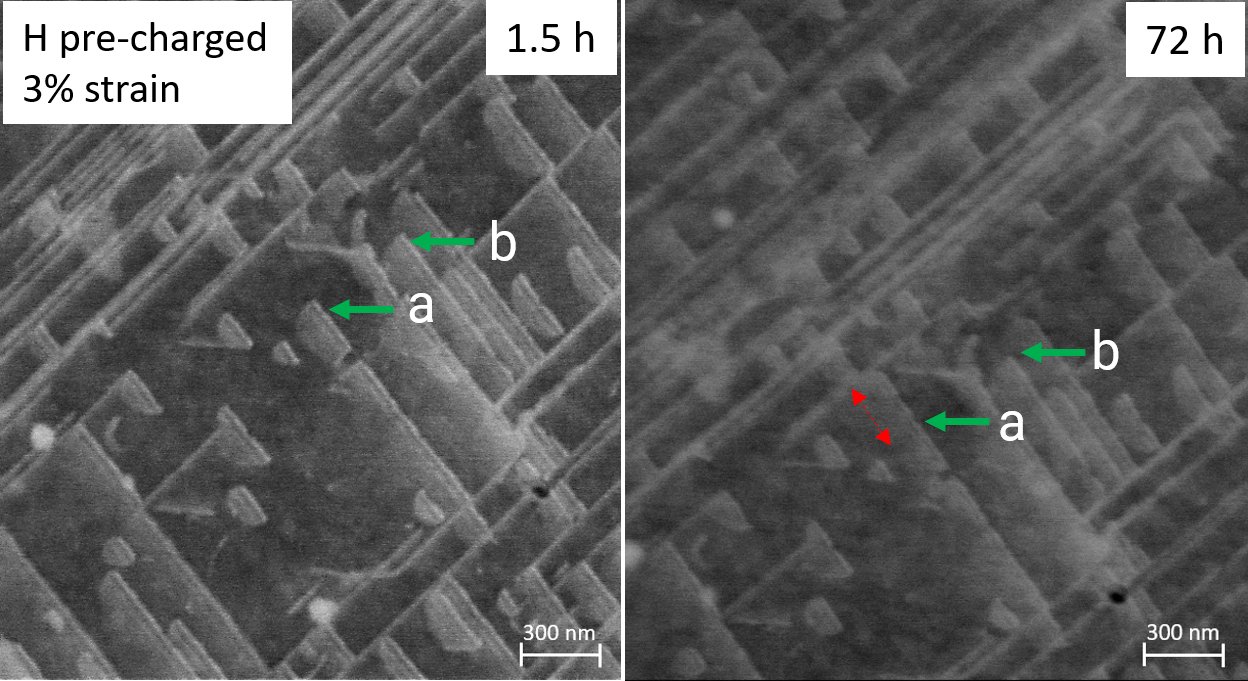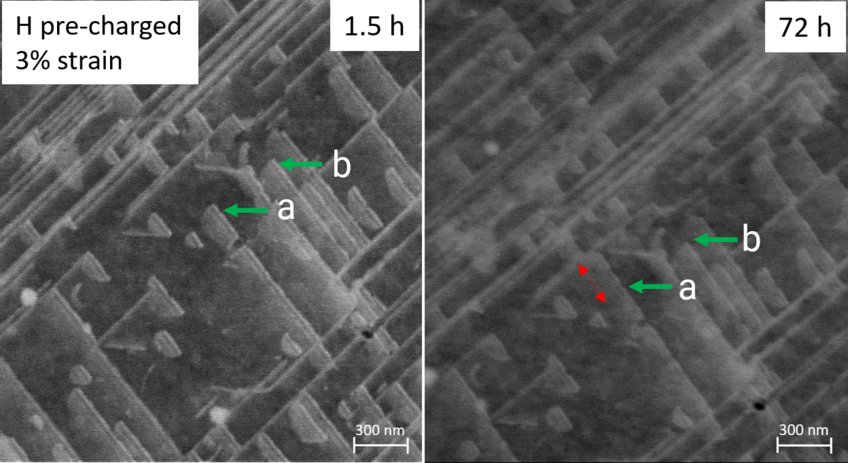In-situ investigation of H interaction with stacking faults (SFs) at the stress concentrated crack tip
The main aspect of this project is to understand how hydrogen interacts with dislocations/ stacking faults at the stress concentrated crack tip. A three-point bending test has been employed for this work.
Hydrogen is proposed as one of the most important energy fuels in the future. However, high strength steels often suffer from unexpected failure even with a few wt ppm hydrogen dissolved in the steel matrix. This is called hydrogen delayed fracture. Possible mechanism for this process can be due to the interactions of hydrogen with dislocations/stacking faults. The motivation of this project is to understand how the hydrogen interacts with dislocations/stacking faults at the stress concentrated crack tip. A three-point bending test has been employed for this work. The material used for the experiment is a high Mn austenitic steel (Fe-0.53C-17.9Mn, wt.%) due to the low diffusion coefficient of hydrogen in austenitic matrix. Before the characterization, the sample is hydrogen pre-charged with around 3% deformation. Then, ECCI and temporal resolved cross correlation EBSD are used to analyse the behavior of stacking faults (shown an example in Fig. 1) and internal elastic stress evolution, respectively.













